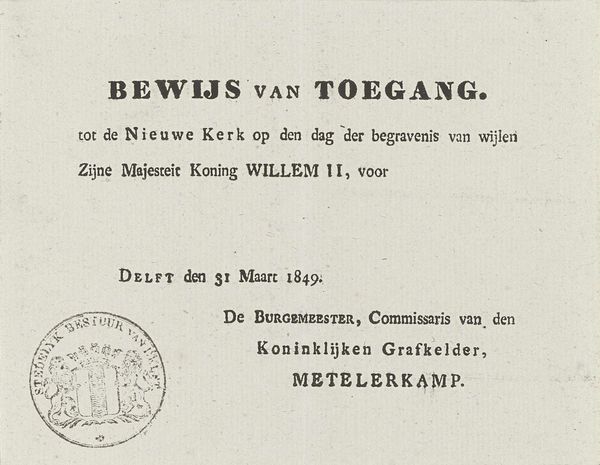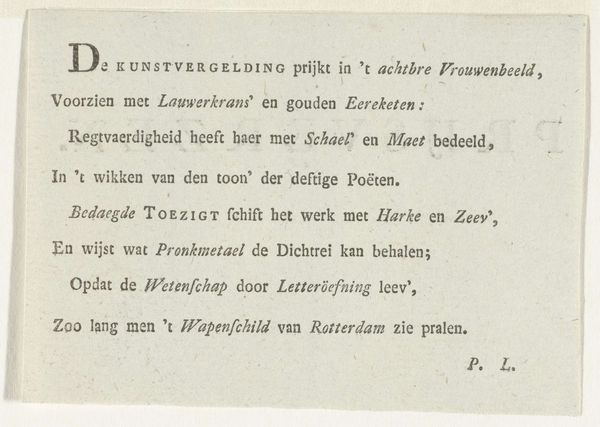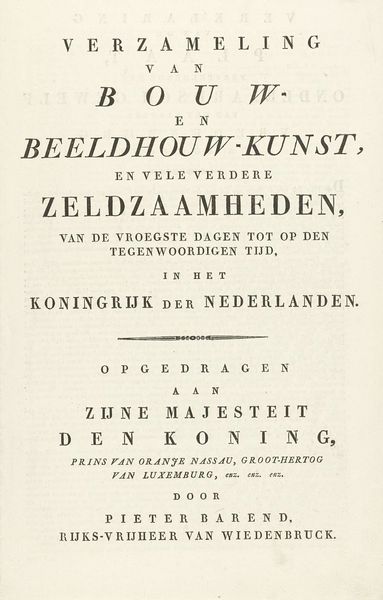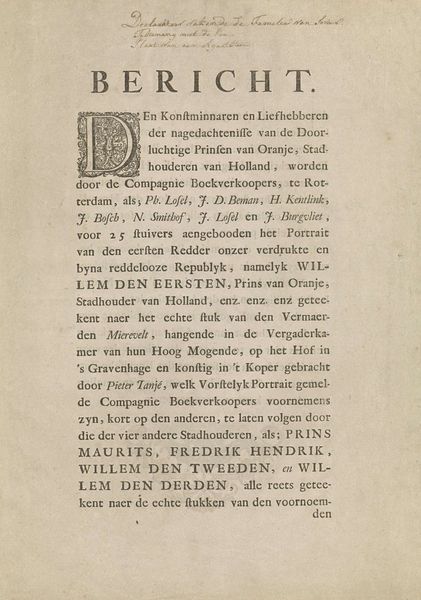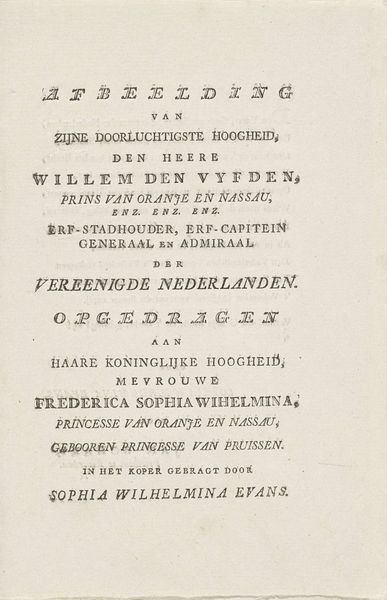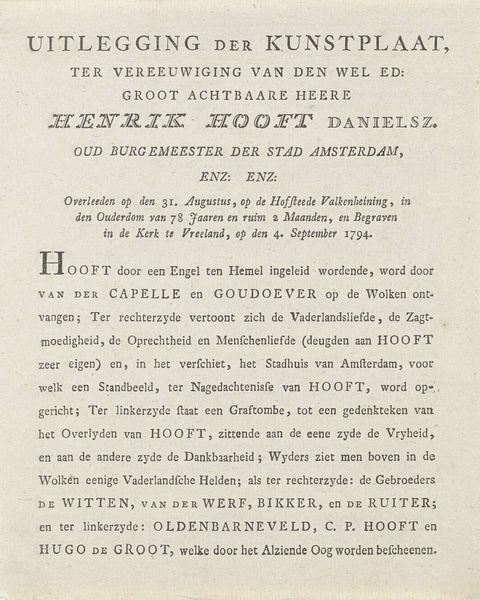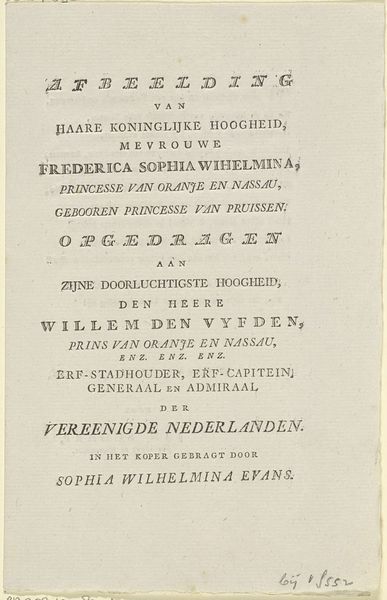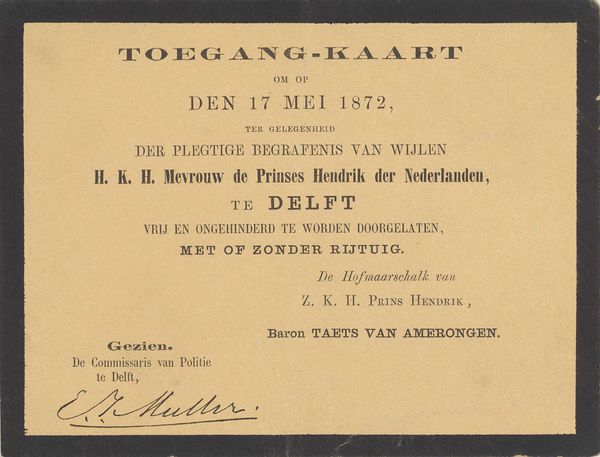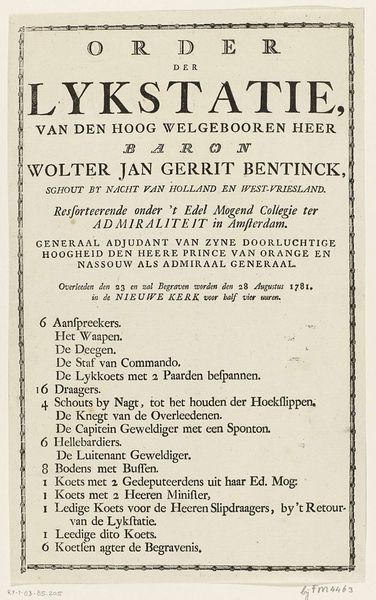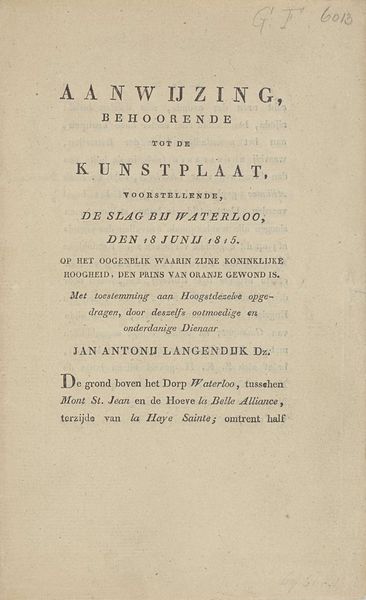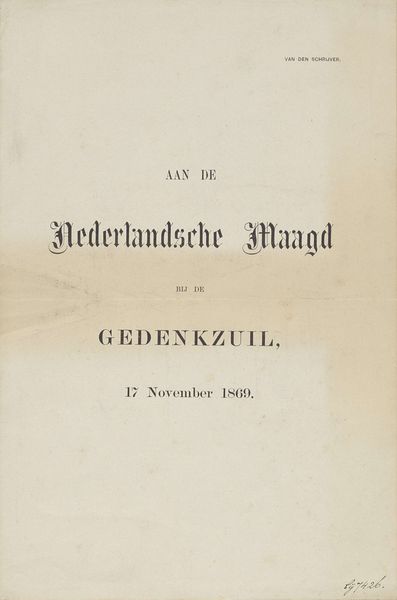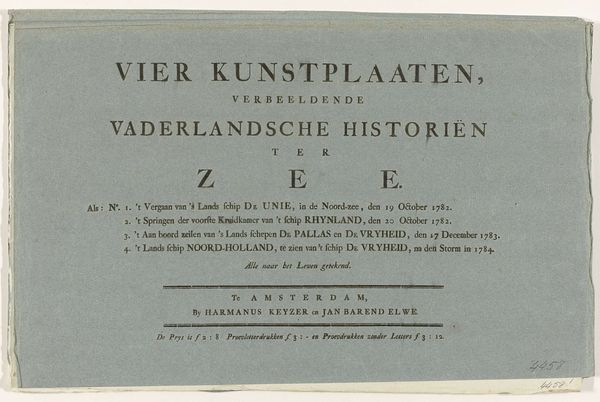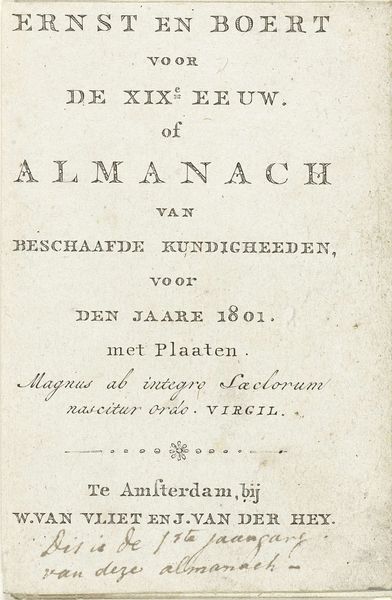
print, typography, engraving
# print
#
typography
#
history-painting
#
engraving
Dimensions: height 115 mm, width 148 mm
Copyright: Rijks Museum: Open Domain
Curator: What strikes me immediately is the stark contrast between the sombre occasion and the relatively clean, straightforward typography. Editor: Indeed. Here we have what is referred to as "Toegangsbewijs voor de begrafenis van Koning Willem II, 1849," essentially an admission ticket to the town hall on the day of the funeral. It was printed anonymously in 1849 using engraving. Curator: The layout is inherently formal, notice the symmetrical arrangement of the text blocks anchored by the seal. Even in miniature, one senses the implicit social hierarchy encoded within its structure. Who was permitted where, and how was that visibly marked? Editor: Well, considering the visual weight of the typography, each word choice undoubtedly carries a distinct gravity. "Bewijs van Toegang" itself conveys a restricted invitation. Even the mention of 'Wijlen Zijne Majesteit Koning Willem II,' that respectful epithet, adds a certain weight, calling on established hierarchies and expectations. Curator: And the civic seal there, centered and meticulously rendered, reinforces the solemn authorization conferred upon this little document. Beyond simply granting entry, it suggests sanctioned grief, doesn't it? Editor: That seal also signals cultural memory; the emblems embedded relate to local identity, connecting the monarchy to Delft. The typography used here presents tradition through design while connecting grief with the need for orderly civic ritual. This piece reveals a very deliberate negotiation between public mourning and civic function. Curator: I concur. A closer look, however, reveals small imperfections in the print itself, barely perceptible flaws, a slight blurring of ink. Does this inject an unintended air of ephemerality, an acceptance of decay into this carefully constructed image of timeless authority? Editor: It's a compelling idea. Those minor flaws are inevitable outcomes given the chosen printmaking process, but now these signs gain even deeper associations by becoming integrated into a ritual and social document connected to death. These material details now gain greater symbolic heft, acting like subtle, sobering reminders. Curator: Exactly. Thinking structurally about such features grants an enhanced understanding of the context, that sense of immediacy that transcends mere archival utility. Editor: Agreed. Considering those embedded signs enriches and layers any future cultural or contextual understanding. I find this brief semiotic snapshot both captivating and surprisingly profound.
Comments
No comments
Be the first to comment and join the conversation on the ultimate creative platform.
